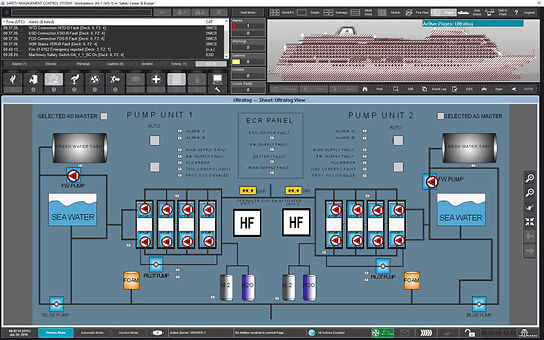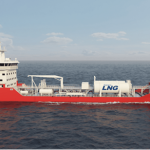Numerous different ships systems and controls being maintained by engineer officers are used on all types of vessels today. These consist of engine room systems such as lube oil, fuel oil, and seawater, along with deck officer’s roles such as cargo recording and navigation.
Management of the Various Systems Within the Engine Room and Deck Departments
A ship could not function without management of the systems incorporated within her hull and deck. The following sections provide articles on this subject, and I have put these in their relative groups with a brief description. The subjects have been divided under general headings and linked to articles written by myself and other Bright Hub writers in the Marine Engineering channel. We begin with the various systems and controls within the engine room, before moving onto examples in the deck department.
Ships Electrical Systems
The electrical power is supplied from the generators to the main switchboard from where it is distributed to all parts of the ship through numerous breakers and relays. It is maintained by the Electrical / Electronics Engineer. There are normally three generators, one running and supplying power, one on standby, and one down for maintenance whilst at sea. When maneuvering or alongside working cargo, two generators share the load with the other on standby.
Lube Oil Systems
The lube oil system comprises of the main engine sump, suction and discharge filters, circulating pump, coolers and centrifuge. The sump is the main storage tank, located under a grill in the crankcase. The suction and discharge filters remove any particles contained in the oil. (Any pieces of white metal in these could indicate bearing wiping, and must be investigated)
The cooler is required to maintain optimum temperature and viscosity and cools the oil using seawater that passes through tubes or plates depending on the type of cooler.
Regular centrifuging of the oil is essential for removing particles and water from the oil sump; some engines have the centrifuge running twenty-four hours a day; only being stopped for cleaning.
Heavy Fuel Oil System
The majority of ships engines use heavy fuel oil (HFO) being a by-product of crude oil refining. It is taken on board ships as bunkers, a sample of which should be checked by the Chief Engineer, as some suppliers abroad have been suspected of mixing old sump oil and even scavenge drains with bunker oil.
Before use in the main engine the HFO must be processed by heating, filtration, purifying, and clarifying. The heating is to keep the oil from waxing and improve the usually high viscosity; filtration is carried out at various stages of the process to remove particles. Purifying removes the water and sludge in the HFO, and clarification removes the solids.
Ship’s Deck Systems and Control
The Deck Officers use various methods to control the various systems of navigating, tank cleaning, steering the ship, or control of the cargo. Control of the cargo and producing a cargo plan is also the duty of the Deck Officers, usually the mate or Second Officer. It is a very important document required to keep a record of the type, description, and weights of the various pieces of cargo stored in the holds or on deck. It also notes its location as well as the sequence of loading, and thus the reverse order of discharge, in the various ports of call.
Navigation System
The bridge is the Deck Officers domain. When I was at sea as an engineer, I used to go up to the bridge when off watch and marveled at the sophisticated navigation gear even in those far off days of 40-odd years ago.
This consisted of the auto-pilot, gyro-counter, radar screen, ship’s speed and distance run, all neatly arranged on the bridge. The links below provide further information on this subject.
Cargo Tank Cleaning Systems on Oil Tankers
When I was an engineer at sea, I used to dread the tank cleaning as the whole ship smelt like a petrol station forecourt! However it must be done in preparation for the next cargo. Gas freeing of the tanks is carried out first, with this being a combination of inert gas flooding and venting of the tanks.
Gas freeing and tank cleaning is under the remit of the Deck Officers; the Chief Officer normally being in charge of operations.
Tank cleaning occurs after discharge of cargo and gas-freeing, usually while on the sea voyage to the next loading port. The following two links explain the process involved in these systems.
Ships Ballasting Systems
This is under the control of the Deck Officers using their own pumps in the pump-room or requesting the use of the engine room seawater on deck pump. Ballasting is carried out as the cargo is loaded or discharged to maintain the ships stability. There has been a lot of controversy lately regarding taking ballast on in one port and discharging in another port. This can transport and transfer alien species that will wreak havoc with the local flora and fauna.


